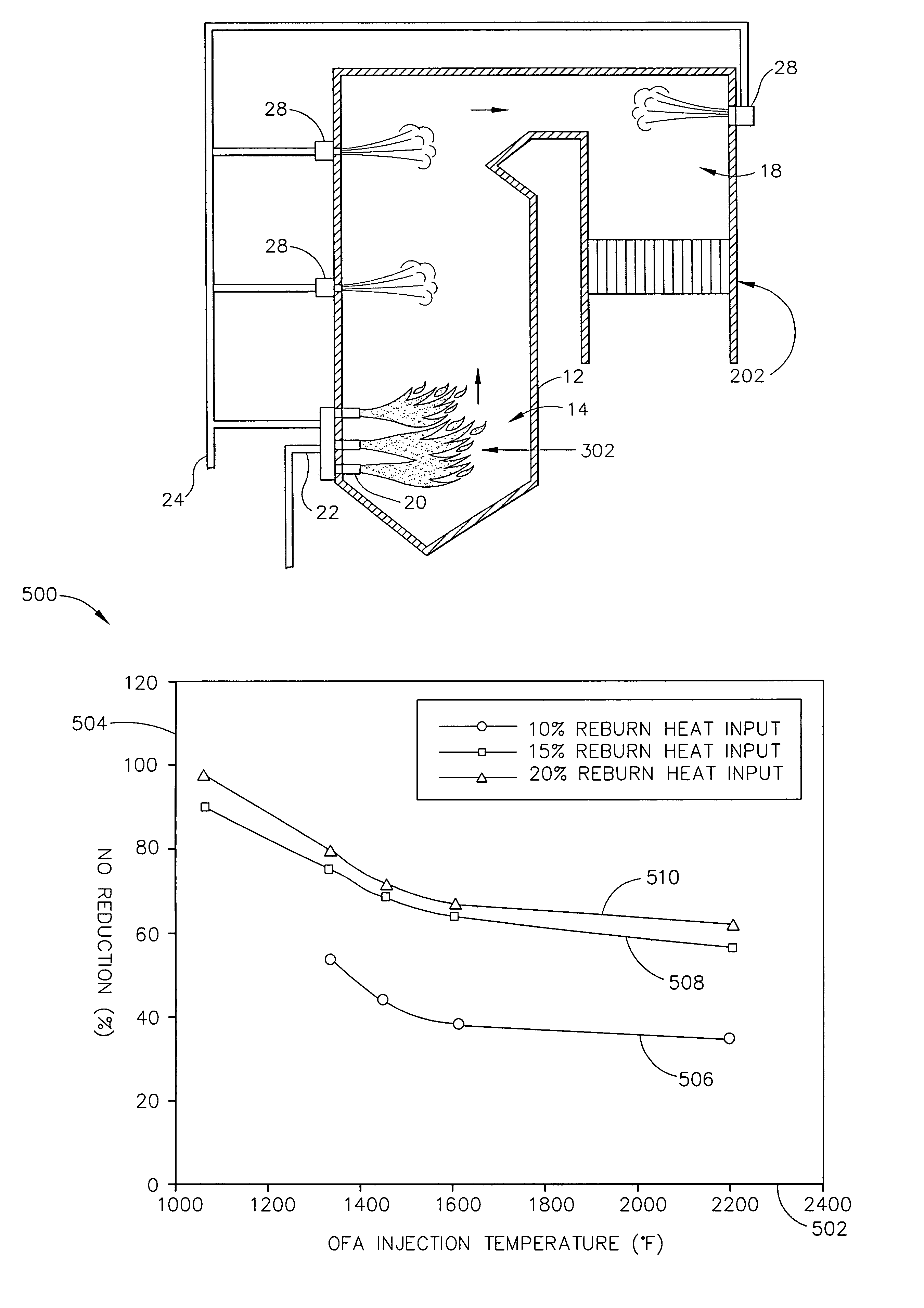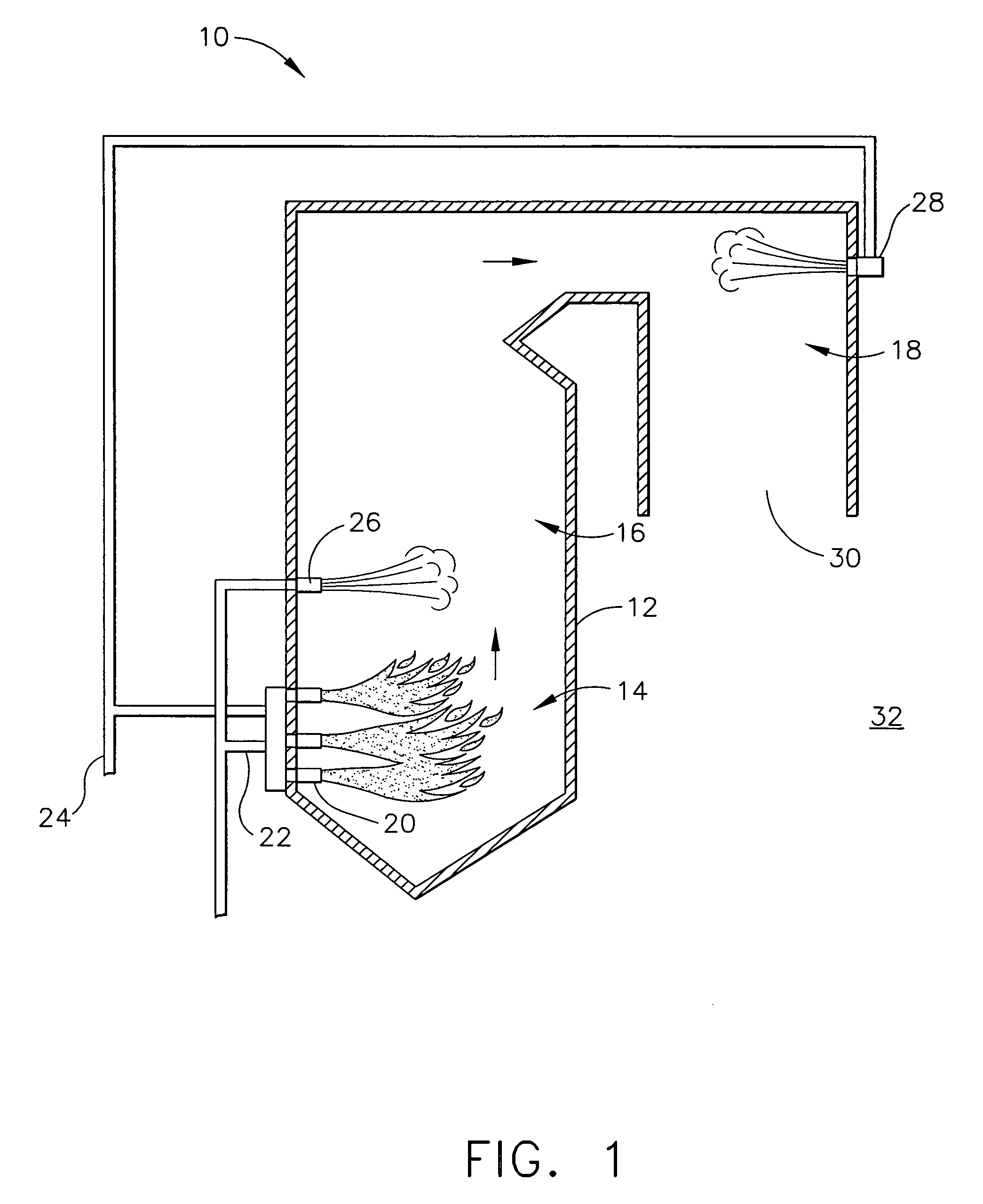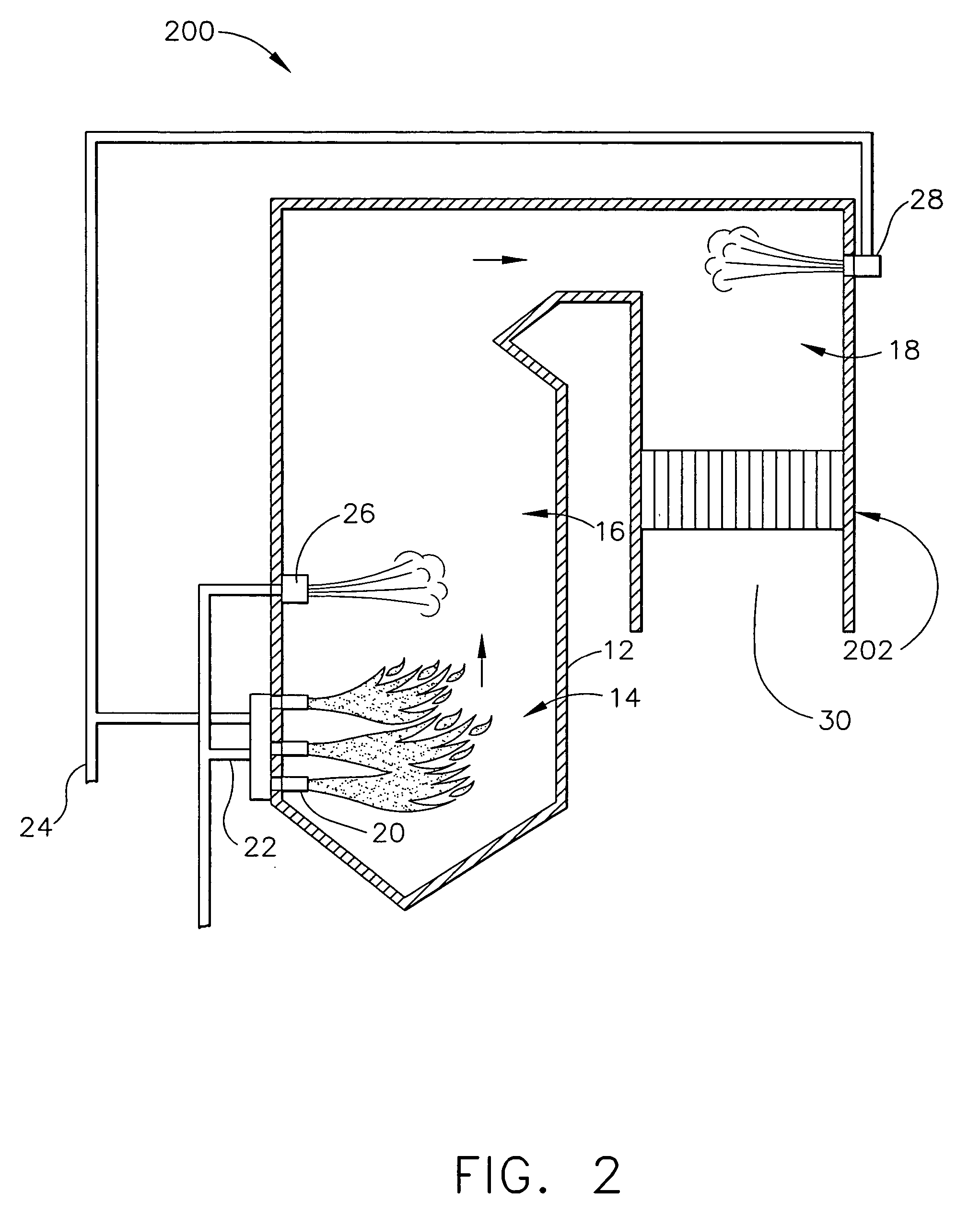Methods and systems for operating combustion systems
a combustion system and combustion technology, applied in the direction of emission prevention, combustion using lump and pulverulent fuel, furnaces, etc., can solve the problems of limited catalyst life, all-encompassing solution, and nitrogen oxide emissions that are the subject of growing concern, so as to reduce the concentration of nitrogen oxides and reduce the nitrogen oxides in combustion flue gas
- Summary
- Abstract
- Description
- Claims
- Application Information
AI Technical Summary
Benefits of technology
Problems solved by technology
Method used
Image
Examples
Embodiment Construction
[0019]As used herein, the terms “nitrogen oxides” and “NOx” are used interchangeably to refer to the chemical species nitric oxide (NO) and nitrogen dioxide (NO2). Other oxides of nitrogen are known, such as N2O, N2O3, N2O4 and N2O5, but these species are not emitted in significant quantities from stationary combustion sources, except N2O in some systems. Thus, while the term “nitrogen oxides” can be used more generally to encompass all binary N—O compounds, it is used herein to refer particularly to the NO and NO2 (i.e., NOx) species.
[0020]FIG. 1 is a schematic view of an exemplary power generating boiler system 10 that includes, a furnace 12 including a main combustion zone 14, a reburn zone 16, and a burnout zone 18. Main combustion zone 14 may include a one or more fuel injectors and / or burners 20 that are supplied from a fuel source (not shown) with a predetermined and selectable amount of a fuel 22. In the exemplary embodiment, the fuel source may be, for example, a coal mill ...
PUM
 Login to View More
Login to View More Abstract
Description
Claims
Application Information
 Login to View More
Login to View More - R&D
- Intellectual Property
- Life Sciences
- Materials
- Tech Scout
- Unparalleled Data Quality
- Higher Quality Content
- 60% Fewer Hallucinations
Browse by: Latest US Patents, China's latest patents, Technical Efficacy Thesaurus, Application Domain, Technology Topic, Popular Technical Reports.
© 2025 PatSnap. All rights reserved.Legal|Privacy policy|Modern Slavery Act Transparency Statement|Sitemap|About US| Contact US: help@patsnap.com



